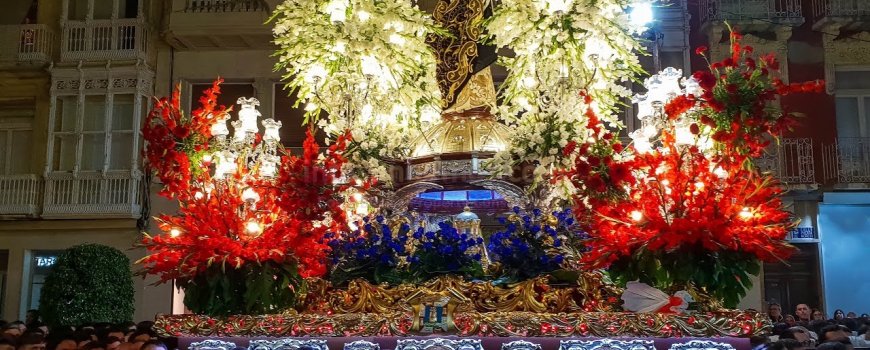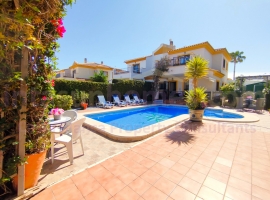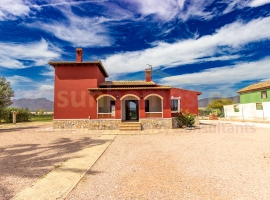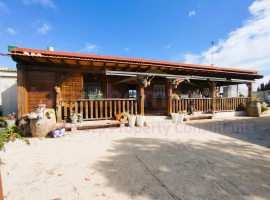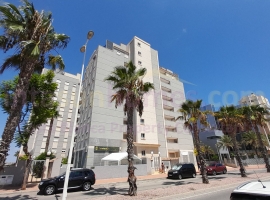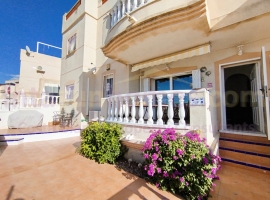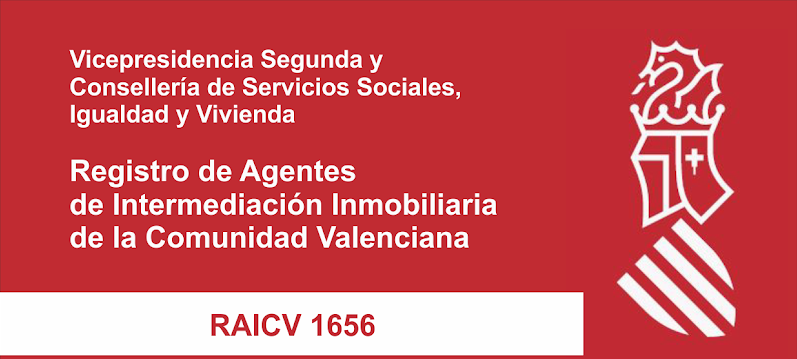Happy Easter!
With Easter in full swing, there are a plethora of activities to attend up and down the coast this Easter weekend!
Orihuela
This spectacular event features public participation, and a rich artistic heritage thanks to the figures created by sculptors of the stature of Salzillo. This is Easter week in Orihuela, in the province of Alicante. The origins of these celebrations date back to the 16th century.
Highlights among the numerous events that take place include the procession of "El Silencio", which takes place on Good Friday and convenes over 10,000 people. The procession passes through the old town, where the only sounds to be heard are the penitents' footsteps, and the dark night is illuminated by the lanterns of the participants. A chant dating from the 18th century –the "Canto de la Pasión"– dispels the stillness as Christ passes. The procession on the morning of Easter Saturday, known as the "Caballero Cubierto" serves as a complete contrast and is unique due to the papal bull that declares that only one person can wear a hat inside the church. This is an old tradition that lives on to this day in Orihuela.
Easter week is one of Spain's most heartfelt and deeply-rooted festivals. Its history and tradition go back many centuries and commemorate the passion and death of Jesus Christ. The streets of many of Spain's cities, towns and villages are transformed into scenes of religious fervour and devotion, where grief and meditation are combined as Christ's death is relived. Music, art and colour come together in these magical processions –solemn parades in which throngs of people accompany the religious images on their route through the streets.
Murcia City
Holy Week in the Region of Murcia is a memorable occasion, and in the capital city, the Semana Santa celebrations have been designated as being of national tourist interest due to the sheer scale of what occurs here during Holy Week. There are some wonderful stories attached to Semana Santa in Murcia, and the collection of sculptures owned by the Cofradias is impressive, including one of the most important baroque sculptural collections in Spain, those by Francisco Salzillo, which parade on Good Friday.
Although Murcia is renowned for the scale of its processions, there are many experiences to be enjoyed within this week which strip the grandeur and pomp out of the occasion and make it what it really is for the people who live here and take part in this week: an expression of their faith, community and traditions.
Don't just come to Murcia and buy a seat to watch a procession, thinking that this is what Semana Santa in Murcia is all about because it's not.
The joy of this week is watching the 'bidding" ceremonies taking place in the streets, hearing the muffled sounds of drums in the distance, being there when the statue is lowered through the window of the church because it's too big to fit through the door, watching the stain of red robes spread across Puente Vieja as 4,000 Coloraos walk along the banks and cross the river during their procession on a Wednesday night or just enjoying a spot of tapas and a drink as the hustle and bustle of Semana Santa passes by.
Cartagena
Military precision, sleek shining lines of gliding penitents, and the sheer scale of these atmospheric Semana Santa processions in Cartagena make this one of the most popular Easter Week events in the Region of Murcia, and certainly well worth visiting if just to see a spectacular display on a grand scale.
Semana Santa in Cartagena is unique, and in very few ways resembles processions in other parts of the region in spite of having the same core elements. The city's military background and long naval history have resulted in regimented processions, silent lines of synchronised penitents, staffs tapping in unison, smooth satin shining in the glow of polished lamps.
Yet, although the processions are impressive in their scale and richness, there is still an incredible intimacy to Cartagena's Semana Santa. The narrow streets with crafted wrought iron balconies and sensuously curving modernist buildings create an atmosphere which embraces those who watch the passing of satin and intense faith, and the whole experience is an enveloping and intimate one.
There are four brotherhoods or Cofradías, the most famous being the Californios, who wear red, and the Marranos in deep purple, with a traditionally deep rivalry between the two.
To explain the traditions and heritage of each is a major undertaking, with a vast volume of superfluous detail, so in brief, these are the basics of the four:
The Royal and Illustrious Brotherhood of Our Lord Jesus of Nazareth, known as Los Marranos: this is the oldest brotherhood, dating back to the 17th century and the port of Cartagena, the nickname coming from the tradition that in order to pay for their procession, fishermen earned the extra money needed by selling a specific species of fish, a mako shark, known as a Marajo.
They wear distinctive rich purple and organise the two main Good Friday Processions, the procession of the Promises of piety on Holy Monday and of the True Cross on Saturday.
The Illustrious Brotherhood of the most Holy and Royal Christ of the Succour was founded in 1691 as an aristocratic brotherhood by the Duke of Veragua as a means of giving thanks for the miraculous cure of his son. He also built a spectacular chapel in the old cathedral of Cartagena, but sadly this was gutted during the Civil War. Their main job is to head the Via Crucis on the morning of Viernes de Dolores, an early morning event which begins at 3.30 in 2018 on the Friday before Palm Sunday.
The Californios (full name “La Pontificia, Real e Ilustre Cofradía de Nuestro Padre Jesús en el Doloroso Paso del Prendimiento y Esperanza para la Salvación de las Almas”) date back to the 18th century, and some claim that they owe their name to the participation of a group of seafarers who had made their fortunes in California. This was a well-funded brotherhood which gathered an impressive collection of sculptures by the master sculptor Salzillo as the city enjoyed a time of economic stability and growth. Sadly most were destroyed during the turbulence of the Civil War, the present collection mainly created by Maríano Benlliure.
They're distinctive in their vibrant red habits, and are most in evidence on Wednesday night in the great procession of the Taking of Christ, on the night of Viernes de Dolores, the Palm Sunday procession, the journey of the Apostles on Holy Tuesday and the procession of silence on Maundy Thursday.
The Royal and Illustrious Brotherhood of Our Lord Jesus Resurrected. Glowing in white, this brotherhood is the youngest, founded in 1943, and organizes the procession of the Resurrection on Easter Sunday morning.
Sources: Murcia Today, Spain.info


